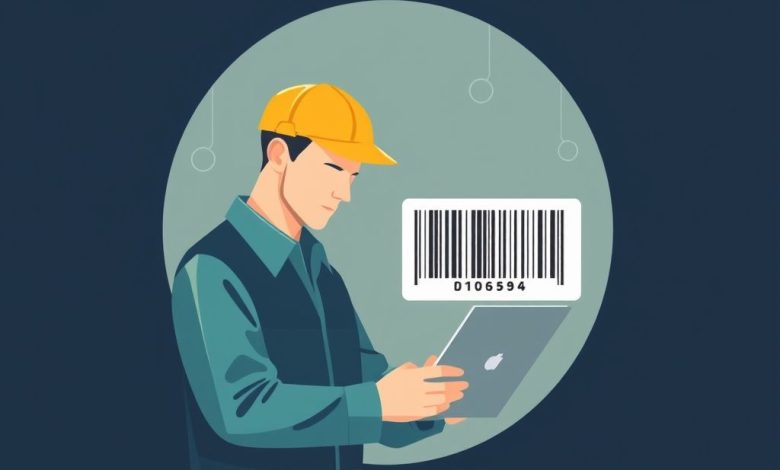Field Service Management for Barcode Asset Validation

Introduction
In today’s fast-paced business environment, efficient asset management is crucial for organizations operating in various industries. One of the most effective methods for tracking and validating assets in the field is through barcode technology. This article explores the concept of Field Service Management (FSM) in conjunction with Barcode Asset Validation, highlighting its benefits, implementation strategies, and best practices.
The Importance of Asset Tracking in Field Service Management
Asset tracking is a critical component of any successful FSM system. It enables companies to monitor the location, condition, and status of their equipment and inventory in real-time. This information is invaluable for optimizing operations, reducing costs, and improving customer satisfaction.
Barcode technology plays a significant role in this process by providing a quick, accurate, and reliable method for identifying and tracking assets. By assigning unique barcodes to each piece of equipment or item, technicians can easily scan them during field visits, updating the asset’s status and location instantly.
Benefits of Barcode Asset Validation in Field Service Management
Implementing barcode asset validation within an FSM system offers numerous advantages:
- Improved accuracy: Barcodes eliminate human error associated with manual data entry, ensuring that asset information is always up-to-date and correct.
- Increased efficiency: Scanning barcodes significantly reduces the time spent on paperwork and data collection, allowing technicians to focus more on their core tasks.
- Enhanced security: Barcodes make it easier to track who accessed which assets and when, improving accountability and preventing unauthorized use or theft.
- Better decision-making: Real-time data from barcode scans allows managers to make informed decisions based on current asset statuses and locations.
- Cost savings: By streamlining processes and reducing errors, barcode technology can lead to substantial cost reductions over time.
Implementation Strategies for Barcode Asset Validation in Field Service Management
To successfully integrate barcode asset validation into an existing FSM system, consider the following steps:
- Choose the right hardware: Select ruggedized scanners capable of functioning in various environmental conditions. Consider both handheld and fixed-position scanners depending on the specific needs of your operation.
- Develop a robust database: Create a centralized system to store all asset-related information, including barcodes, descriptions, locations, and maintenance histories.
- Train staff: Ensure that all technicians understand how to properly use barcode scanners and interpret the resulting data.
- Integrate with existing systems: Seamlessly connect the barcode scanning functionality with other FSM tools such as scheduling software and work order management systems.
- Regularly update and maintain: Keep the barcode system up-to-date by regularly auditing and replacing worn-out labels and updating asset records.
Best Practices for Effective Barcode Asset Validation
To maximize the benefits of barcode asset validation in FSM, adhere to these best practices:
- Standardize naming conventions: Establish clear guidelines for creating unique and consistent barcode identifiers across all assets.
- Implement regular audits: Periodically verify the accuracy of barcode data against physical assets to ensure discrepancies are quickly identified and resolved.
- Utilize mobile devices: Leverage smartphones and tablets equipped with barcode scanning apps to enable seamless data capture in the field.
- Automate reporting: Set up automated reports to highlight trends, anomalies, and potential issues identified through barcode scans.
- Implement error handling: Develop robust error-checking mechanisms to handle situations where barcodes may be damaged, unreadable, or missing.
Challenges and Solutions
Despite the numerous benefits, implementing barcode asset validation in FSM systems can present several challenges:
- Initial investment: The cost of purchasing scanners and developing a comprehensive system can be significant upfront.
- Training requirements: Staff may require time and effort to learn how to use new technology effectively.
- Compatibility issues: Ensuring seamless integration with existing software and hardware can be complex.
- Battery life: Mobile devices used for scanning may experience battery drain during extended field visits.
To address these challenges:
- Consider phased implementation to spread costs over time.
- Offer comprehensive training programs to ensure quick adoption.
- Partner with experienced IT consultants to optimize system integration.
- Use long-lasting batteries or external power sources for mobile devices when necessary.
Conclusion
Field Service Management coupled with Barcode Asset Validation represents a powerful combination for optimizing asset tracking and management processes. By leveraging this technology, organizations can significantly improve operational efficiency, reduce errors, and make more informed decisions based on real-time data.
As the field service industry continues to evolve, embracing innovative technologies like barcode asset validation will be crucial for companies seeking to maintain a competitive edge. By investing in robust FSM systems that incorporate advanced tracking methods, businesses can streamline their operations, enhance customer satisfaction, and ultimately drive growth and profitability in today’s fast-paced market.
Remember, while technology offers many advantages, it’s essential to balance innovation with practical considerations such as staff training, system integration, and ongoing maintenance. By doing so, organizations can harness the full potential of barcode asset validation to transform their Field Service Management practices and achieve greater success in their respective industries.




